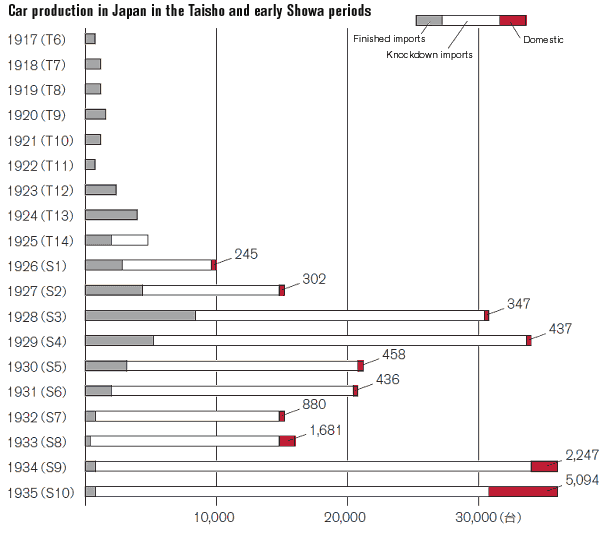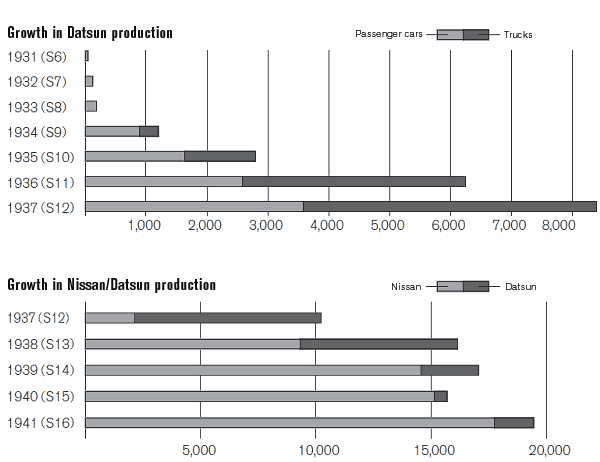| SHORT STORY |
Car production in Japan in the Taisho and early Showa periods
 |
Before the completion of Nissan Motor’s Yokohama plant, Datsun production was based in the Osaka Plant (the former Osaka factory of the Dat Jidosha Seizo Co.). It was a small-scale operation, producing 10 cars in 1931, 150 in 1932, and 202 in 1933. In 1934, when manufacturing operations switched to Nissan, output leaped to 1,170 units. And when the Yokohama Plant - with its belt conveyors and other modern equipment - came on line in April 1935, output reached 2,800 units. In the following year all production was concentrated in the Yokohama Plant and output grew further to 6,163 units. In 1936, with the addition of Nissan models, output reached 8,353 units, and in two years it topped the 10,000 mark. This was the largest mass production system ever seen for "Made in Japan" automobiles. In 1936, a new Law Concerning the Manufacture of Motor Vehicles stipulated that any automobile manufacturer with an annual output of more than 3,000 units was required to obtain a license from the government. This effectively limited the activities of foreign-owned manufacturers like Ford Japan and GM Japan, and from 1940 onwards they effectively ceased to operate.  |
| Close |